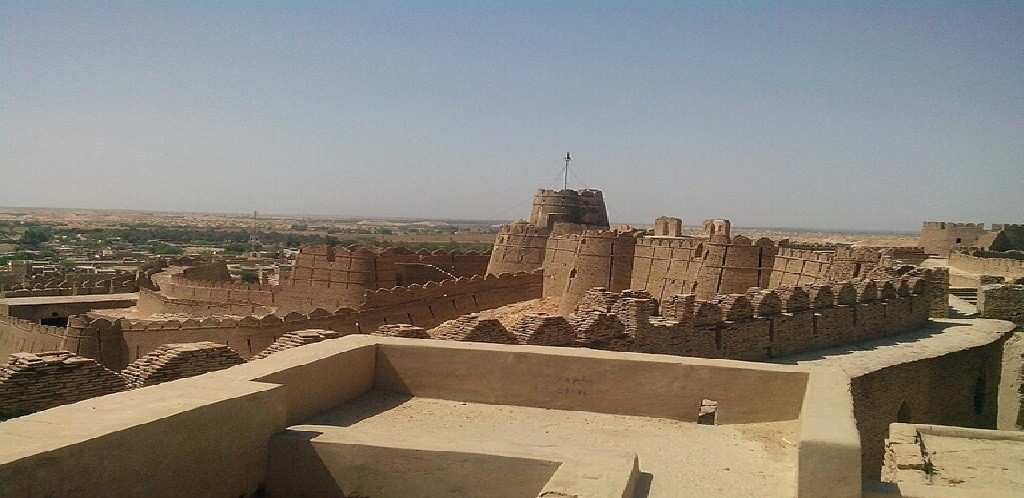Introduction
- Overview of the Theme: Begin with an introduction to the idea of tolerance and love as essential values in Indian society, both historically and in the present. Tolerance here refers to the ability to respect and accept differences in culture, religion, ethnicity, and beliefs, while love refers to compassion and harmony across divides. Start by highlighting how India, as one of the oldest continuous civilizations, has nurtured an environment where multiple cultures and faiths have coexisted peacefully for millennia.
- Relevance in Contemporary Society: Transition into the modern-day importance of these values. Discuss how India, despite facing challenges such as communal tensions, religious divides, and caste discrimination, continues to emphasize these ideals through its constitutional framework and cultural ethos. Mention the role of Indian democracy in fostering tolerance through equal rights, secularism, and a commitment to pluralism.
- Statement: Outline your main argument: that the spirit of tolerance and love, as ingrained in Indian tradition, remains a crucial force in contemporary Indian society, both for its social cohesion and as an inspiration for the world.
The Historical Roots of Tolerance and Love in India
- Ancient Civilizations and Early Examples of Tolerance:
- Discuss the Indus Valley Civilization, which predates the Vedic period. The society was characterized by planned cities, public baths, and advanced drainage systems—symbolizing a level of social harmony and shared civic space.
- Contrast the Indus Valley with the subsequent Vedic period, where the concept of “Vasudhaiva Kutumbakam” (the world is one family) began to emerge in the Upanishads, which laid the foundation for Hindu philosophies of inclusivity.
- Religious and Philosophical Traditions:
- Hinduism: Emphasize the core values of acceptance, non-violence (Ahimsa), and unity in diversity found in Hindu philosophy. The Vedas, the Upanishads, and later texts like the Bhagavad Gita focus on understanding the divine in every living being.
- Buddhism: Highlight the contributions of Siddhartha Gautama (Buddha) in promoting the middle path, non-violence, and compassion for all beings. His message of universal love and peace helped establish Buddhism as a philosophy that spread tolerance globally.
- Jainism: Discuss Jainism’s profound commitment to Ahimsa, which extends not only to humans but to all forms of life, advocating for tolerance toward all living beings.
- Sikhism: Explain Guru Nanak’s philosophy of equality, inclusivity, and respect for all religions. Sikhs practice “Seva” (selfless service) and “Langar” (community kitchen), which reflect their commitment to social unity.
- The Role of Indian Kings and Rulers:
-
- Emperor Ashoka: His conversion to Buddhism and the subsequent spread of his edicts promoting peace, tolerance, and non-violence across his empire are classic examples of the role of leadership in fostering societal tolerance.
- Akbar the Great: Known for his policy of religious tolerance (Din-i Ilahi), Akbar’s efforts to include religious leaders from various faiths in his court and engage in dialogue to promote unity are an essential historical example of India’s tradition of tolerance.
The Cultural Foundations of Tolerance and Love
- India’s Cultural Pluralism:
- India has been home to diverse linguistic, cultural, and ethnic groups for centuries. Each region in India has its own unique traditions, art forms, food, and languages. The coexistence of these diverse elements has cultivated a culture where pluralism and tolerance are embedded in everyday life.
- Traditional Indian culture promotes respect for differences through festivals, rituals, and a shared space for cultural exchange.
- Literature, Art, and Music:
- Literature: Texts like the epics (Ramayana, Mahabharata) and the works of poets such as Kabir and Mirabai focus on love and devotion as universal principles that transcend societal boundaries.
- Art and Music: India’s classical music, dance forms, and art reflect a blend of regional traditions. The fusion of different religious and cultural elements in art has fostered mutual respect. For example, the Indo-Islamic fusion of Mughal architecture and the integration of Persian elements in Indian classical music.
- Festivals and Celebrations:
-
- India’s festivals are examples of cultural integration. Diwali (Hindu), Eid (Muslim), Christmas (Christian), and Gurpurabs (Sikh) are celebrated by various communities in the spirit of harmony. Each festival not only reflects the values of its religion but also includes practices that promote unity, such as shared feasts and community services.
Tolerance and Love in the Age of Colonialism
- Impact of Colonial Rule:
- British colonialism attempted to divide India through their “divide and rule” policies, which exacerbated religious and social divides. The introduction of Western-style education, legal systems, and policies often disrupted traditional systems of tolerance.
- The Indian revolt of 1857 was a significant moment of unity where people from different backgrounds (Hindus and Muslims) united against British rule, emphasizing the underlying spirit of cooperation.
- Mahatma Gandhi’s Role:
- Gandhi’s philosophy of Satyagraha (truth force) and Ahimsa was a direct extension of India’s historical commitment to non-violence and love. Gandhi used non-violent resistance to unite millions of Indians, urging them to embrace tolerance and compassion, irrespective of caste, creed, or religion.
- His focus on religious harmony, particularly his efforts to bridge the divide between Hindus and Muslims, showcased the resilience of India’s inclusive spirit even under colonial oppression.
- The Struggle for Unity Amidst Partition:
-
- The partition of India in 1947 resulted in violence and mass migration based on religious identity. Despite this, many individuals and communities from all religious backgrounds worked together to maintain peace and uphold the principle of tolerance during the post-independence phase.
The Role of Tolerance and Love in Post-Independence India
- Constitution of India and Secularism:
- The Constitution of India, adopted in 1950, guarantees fundamental rights such as freedom of religion, speech, and equality, reflecting the deep commitment to tolerance. India is officially a secular state, meaning that no religion is given precedence over another.
- The constitutional framework was designed to safeguard the diversity of India’s people and ensure the protection of minority rights.
- Integration of Different Communities:
- Post-independence, India took measures to integrate its diverse communities, especially through affirmative action policies for scheduled castes and tribes. The creation of a secular, democratic state was intended to ensure equal representation for all groups.
- Initiatives like the National Integration Council were aimed at promoting unity in diversity.
- Challenges Faced in Post-Independence Era:
-
- Despite these efforts, communal violence, regionalism, and caste-based discrimination have sometimes undermined the principles of tolerance and love. However, India’s democratic institutions and civil society movements have continued to push for a more inclusive society.
The Modern Relevance of Tolerance and Love
- India’s Demographic Diversity in the 21st Century:
- Today, India is a young nation with over 1.4 billion people representing a multitude of languages, religions, and cultures. The survival of a tolerant and peaceful society in the face of rapid urbanization, economic growth, and social change remains a significant challenge.
- Interfaith Dialogue and Initiatives:
- Interfaith organizations, religious leaders, and non-governmental organizations continue to promote dialogue and peace-building efforts. The role of interfaith marriages, common social causes, and collaborative community work (e.g., disaster relief) are key examples of how tolerance is manifesting in modern India.
- Role of Media and Technology:
- While digital platforms can sometimes fuel intolerance, they also present opportunities to spread messages of unity and compassion. Social media campaigns like #WeAreOne and #Tolerance are examples of how technology can be leveraged to foster a spirit of love and understanding.
- Global Significance:
-
- India’s soft power—through its cultural, spiritual, and democratic values—continues to impact the world. The global diaspora has also played a role in promoting India’s values of tolerance and love in international forums and societies.
Tolerance and Love in Contemporary Indian Politics
- Political Parties and Their Role in Fostering or Undermining Tolerance:
- Explore how different political parties have either promoted or undermined India’s foundational principles of tolerance. Parties that emphasize religious identity politics or caste-based reservations often challenge the inclusive ideals of the nation.
- Civil Society Movements:
- Highlight how grassroots movements such as the “Save the Constitution” movement, farmers’ protests, and anti-caste discrimination initiatives are examples of civil society’s active role in maintaining social harmony.
- Education as a Tool for Promoting Tolerance:
-
- Focus on the educational reforms that emphasize secularism, pluralism, and the celebration of diversity. Schools and universities can play an essential role in promoting the values of tolerance by encouraging intercultural exchange and dialogue.
Challenges to the Spirit of Tolerance and Love in India
- Rising Communalism:
- Discuss how incidents of religious violence, hate speech, and increasing intolerance in public discourse threaten India’s tradition of unity and tolerance. Political and social movements that promote religious or caste-based identity politics continue to challenge social harmony.
- Caste System and Discrimination:
- Despite legal protections, the caste system’s legacy continues to affect millions of people, with Dalits and other marginalized groups facing discrimination, social exclusion, and violence. This poses a challenge to the values of love and tolerance.
- Political Exploitation of Divisions:
- The rise of populist politics often utilizes religious and cultural divisions to consolidate votes. This political manipulation undermines the spirit of unity and tolerance.
- Globalization and Its Impact:
-
- While globalization has brought cultural exchange, it has also led to the homogenization of cultures, sometimes resulting in the erosion of local traditions and tensions over identity. This can result in resistance and intolerance.
How the Spirit of Tolerance and Love Can Be Revived in India
- Building Stronger Interfaith and Intercultural Relationships:
- Focus on programs that encourage people from different faiths and cultures to work together in collaborative projects. This could include joint educational efforts, neighborhood peace-building initiatives, and cultural exchanges.
- Encouraging Empathy and Dialogue:
- Discuss how empathy can be cultivated through dialogue, storytelling, and shared experiences. Promote the importance of open, honest discussions about communal issues, the history of violence, and its aftermath.
- Role of the Youth:
-
- The youth play a crucial role in shaping India’s future. Their advocacy for tolerance, diversity, and inclusion—through activism, social media, and education—can ensure the continued relevance of love and tolerance in Indian society.
Conclusion
- Summing Up the Historical and Contemporary Significance of Tolerance and Love:
- Reflect on the enduring significance of tolerance and love in Indian society and culture. Reiterate the importance of these values for the continued peace and prosperity of India.
- Final Reflection:
-
- Emphasize that despite current challenges, India’s commitment to these values remains strong, and with continued effort, the ideals of tolerance and love can guide India toward a brighter future.





